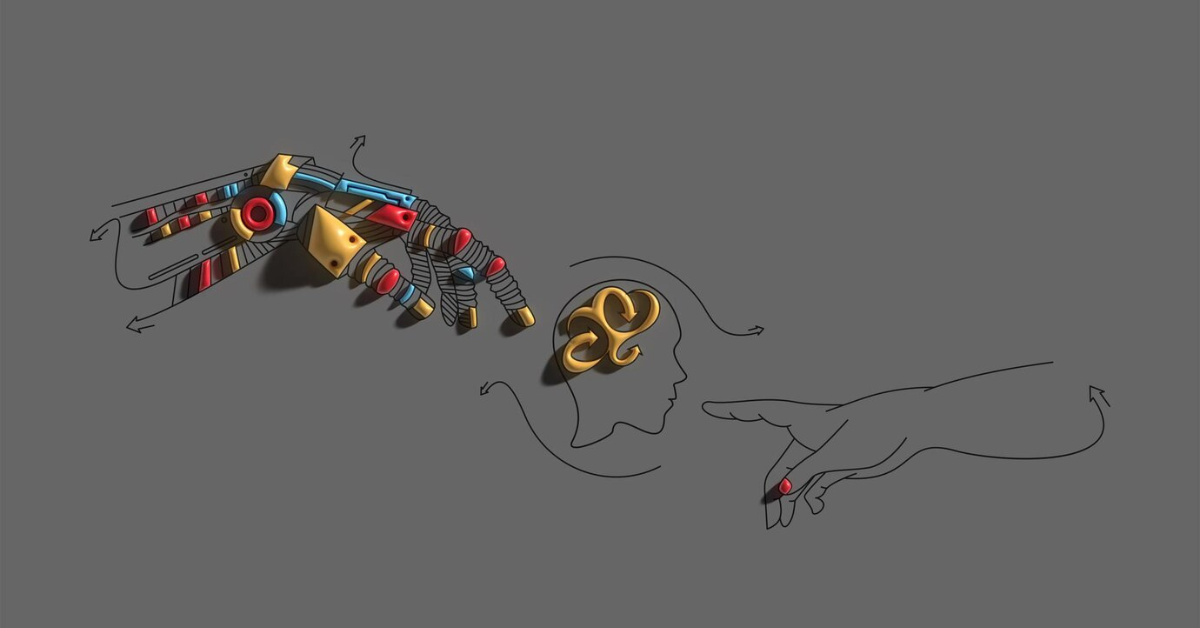In a world constantly buzzing with activity and information overload, many people—especially students—are searching for ways to manage stress, find mental clarity, and reconnect with themselves. One technique that’s gaining popularity for its calming and transformative effects is neurographic art.
This powerful art form blends neuroscience and creativity, offering a visually expressive way to soothe the mind, reduce anxiety, and promote emotional wellness. The best part? You don’t need to be an artist to experience its benefits. Neurographic art is accessible, intuitive, and incredibly rewarding for individuals of all ages and backgrounds.
Table of Contents
- What Is Neurographic Art?
- The Origins and Philosophy Behind the Practice
- How Neurographic Art Works on the Brain
- Benefits of Neurographic Art in Education and Everyday Life
- Who Can Practice Neurographic Art?
- Step-by-Step: How to Create Neurographic Art
- Materials Needed for Neurographic Art
- Table: Neurographic Art Benefits by Age Group
- Neurographic Art in Schools and Classrooms
- Common Misconceptions About Neurographic Art
- Real-Life Stories: Transformative Experiences Through Art
- Tips for Enhancing Your Neurographic Art Practice
- Integrating Neurographic Art Into Daily Wellness
- Conclusion
- FAQ
What Is Neurographic Art?
Neurographic art is a form of meditative drawing that encourages emotional processing through free-flowing lines and shapes. It was developed in 2014 by Russian psychologist Pavel Piskarev. The method is rooted in the idea that drawing lines and connecting them in a particular way can tap into the subconscious and rewire mental patterns.
Unlike traditional forms of art, neurographic drawing doesn’t focus on realism or aesthetics. Instead, it emphasizes the act of creating as a means of transforming inner thoughts and emotions.
The Origins and Philosophy Behind the Practice
Pavel Piskarev, the creator of neurographic art, envisioned the practice as a bridge between conscious thought and unconscious patterns. He combined elements of neuropsychology, gestalt therapy, and abstract art to form this unique discipline.
The philosophy is simple: when you draw, you engage your brain in a new way. The random lines you create reflect your current mental state. By transforming those lines—rounding intersections and adding colors—you shift your perspective and, according to proponents, help reshape neural pathways.
How Neurographic Art Works on the Brain
From a scientific standpoint, neurographic art engages both hemispheres of the brain:
- Left Brain: Helps organize lines, shapes, and patterns logically.
- Right Brain: Promotes creativity, intuition, and emotional processing.
This dual engagement results in a state of “flow”—a meditative mindset where the brain is relaxed but focused. During this state, stress levels decrease, while creativity and problem-solving abilities increase.
Benefits of Neurographic Art in Education and Everyday Life
Neurographic art offers numerous psychological, emotional, and cognitive benefits:
Emotional Benefits:
- Reduces stress and anxiety
- Helps process complex emotions
- Encourages self-awareness and mindfulness
Cognitive Benefits:
- Enhances focus and concentration
- Supports memory and spatial reasoning
- Stimulates creativity and innovation
Social and Educational Benefits:
- Encourages expression without words
- Ideal for classroom stress relief
- Builds confidence in students who struggle with traditional academics
Teachers and therapists have found that neurographic ar’t can help children and adults alike tap into inner calm and creativity—especially during stressful times like exams, life transitions, or burnout.
Who Can Practice Neurographic Art?
One of the most appealing aspects of neurographic ar’t is its inclusivity. Anyone can do it—regardless of age, skill level, or artistic background.
Ideal for:
- Children in school who need a non-verbal outlet
- Teens coping with academic or social pressures
- Adults seeking stress relief after work
- Seniors looking to enhance brain health and dexterity
- Therapists and educators integrating mindfulness into their sessions
Whether practiced solo, in groups, or guided workshops, neurographic ar’t meets you where you are and gently leads you inward.
Step-by-Step: How to Create Neurographic Art
Getting started with neurographic ar’t is easier than it looks. Here’s a beginner-friendly guide:
Step 1: Set an Intention
Before you start drawing, take a deep breath and reflect on what you’d like to focus on. It could be a problem, emotion, or even a positive goal.
Step 2: Draw Freeform Lines
Using a black marker or pen, draw slow, continuous lines all over your paper. Let them intersect naturally. There’s no right or wrong way to do this.
Step 3: Round the Intersections
At every point where lines cross, round the corners to create a soft, flowing look. This “rounding” is symbolic of smoothing out inner tensions.
Step 4: Add Shapes or Layers
Optional: incorporate circles, waves, or spirals to bring more dimension or emotion to the drawing.
Step 5: Color It In
Choose colors intuitively and fill in the spaces between lines. Focus on how you feel, not how it looks.
Step 6: Reflect
Once finished, spend a few minutes looking at your art. How do you feel? Has your mindset shifted?
Materials Needed for Neurographic Art
You don’t need a lot to get started—just a few simple tools.
| Item | Suggested Type |
| Paper | Sketchpad or printer paper |
| Drawing Tool | Black pen or fine-tip marker |
| Coloring Tools | Colored pencils, markers, or watercolors |
| Optional Extras | Ruler (for guided shapes), stencils |
The key is accessibility. This art form thrives on spontaneity and simplicity.
Table: Neurographic Art Benefits by Age Group
| Age Group | Benefits Experienced |
| Children (5–12) | Improved emotional expression, calm focus |
| Teens (13–18) | Reduced anxiety, improved test performance |
| Adults (19–60) | Stress relief, enhanced creativity |
| Seniors (60+) | Cognitive stimulation, emotional regulation |
This table highlights how neurographic art can be tailored to meet different developmental and emotional needs.
Neurographic Art in Schools and Classrooms
Educators are increasingly turning to neurographic ar’t as a calming activity in school settings. It requires no artistic training, aligns well with SEL (social-emotional learning), and fits into a variety of subjects—from art class to advisory periods.
Classroom Benefits:
- Encourages emotional regulation
- Helps kids transition between activities
- Builds a calm atmosphere during exams
- Inclusive for neurodivergent learners
- Promotes positive peer interaction when done in groups
A 20-minute neurographic session can help students refocus and reset before moving on to more demanding tasks.
Common Misconceptions About Neurographic Art
“It’s just doodling.”
While it might look like doodling at first glance, neurographic ar’t has intention, structure, and reflective elements that distinguish it from random sketches.
“You have to be good at drawing.”
There are no skill requirements. The process matters more than the outcome.
“It’s only for kids or therapy.”
Neurographic ar’t is for everyone. Professionals, creatives, students, and retirees can all benefit from it.
Real-Life Stories: Transformative Experiences Through Art
Many people report feeling “lighter” or “more centered” after practicing neurographic ar’t. Here are a few examples:
- High school student: “I did this before a math exam and felt calmer than I have in weeks.”
- Corporate employee: “It’s now part of my weekly self-care. Ten minutes with music and neuro art shifts my mood.”
- Retired teacher: “This has become my morning ritual. It helps me clear my head before the day begins.”
The impact goes beyond the paper—it often ripples out into better sleep, improved relationships, and increased self-awareness.
Tips for Enhancing Your Neurographic Art Practice
- Set aside quiet time – Eliminate distractions to fully enjoy the process.
- Use music or nature sounds – Sound can enhance the meditative effects.
- Create a theme for your piece – Love, growth, change, or simply gratitude.
- Experiment with color theory – Warm tones for energy, cool tones for calm.
- Reflect through journaling afterward – Write down feelings or ideas that surfaced.
Over time, you may even notice your style evolving—just like your mindset.
Integrating Neurographic Art Into Daily Wellness
Make neurographic ar’t part of your wellness toolkit alongside activities like:
- Morning meditation
- Evening journaling
- Breathwork or stretching routines
- Mindful walks
You don’t need hours—a few lines and colors can be enough to shift your entire mood.
Conclusion
Neurographic art is a beautifully simple way to reconnect with yourself, calm your mind, and express your inner world. It’s more than an art activity—it’s a form of emotional release, meditation, and healing. Whether practiced in a classroom, at your kitchen table, or in a therapy session, the benefits are immediate and lasting.
If you’re looking for a creative way to reduce stress, improve focus, or simply discover a new hobby with purpose, neurographic ar’t is worth exploring.
Start your journey today. Pick up a pen, draw a line, and see where it takes you.
FAQ
Do I need to be artistic to try neurographic art?
Not at all. Anyone can do it—no artistic experience required.
How long should a neurographic ar’t session take?
Anywhere from 10 minutes to an hour. It’s flexible.
Can kids practice neurographic ar’t?
Yes. It’s safe and effective for all ages, including young children.
Is neurographic ar’t a form of therapy?
It can be therapeutic, but it’s not a substitute for licensed mental health care.
What should I do with my finished artwork?
Reflect on it, save it in a journal, or hang it as a reminder of your process.











